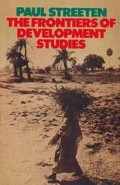Abstract
It IS not uncommon in the history of positive and normative economic doctrine for a new law or a new rule to be announced which is interesting and appears to reveal something important. Under the impact of criticisms (including self-criticisms), the law or the rule is qualified, refined, redefined and reformulated until it becomes a tautology. The original, non-tautological proposition is now seen to be false, though illuminating; the reformulated, redefined, qualified proposition to be true, though tautological. Yet, the proposition and others derived from it survive because they draw strength from swinging in an indeterminate manner between falsehood and tautology. In the area of positive economics, the assumption of profit maximisation, the equation of marginal revenue to marginal cost, and the theories of the firm derived from these premises, may serve as illustrations. In optimising theory the L-M (Little—Mirrlees) method of project appraisal in some respects resembles this procedure. When it has ‘body’ and substance, when it is applicable and practical, it is open to certain objections, most of them seen by the authors themselves. When it is provisos, ‘footnotes’ and qualifications, it tends to retreat into tautology.1
Economic welfare is a subject in which rigour and refinement is probably worse than useless. Rough theory, or good common sense, is, in practice, what we require. It is satisfying, and impressive, that a rigorous logical system, with some apparent reality, should have been set up in the field of social sciences: but we must not let ourselves be so impressed, that we forget that its reality is obviously limited; and that the degree of such reality is a matter of judgement and opinion. (Concluding sentences in I. M. D. Little, A Critique of Welfare Economics, Oxford: Clarendon Press, 1950.)
…for the man of education will seek exactness so far in each subject as the nature of the thing admitschrw(133) (Aristotle, Nicomachean Ethics 1094b).
Access this chapter
Tax calculation will be finalised at checkout
Purchases are for personal use only
Preview
Unable to display preview. Download preview PDF.
References
L-M, ‘Further Reflections on the OECD Manual of Project Analysis in Developing Countries’ (mimeo, May 1970) p. 5.1.
See P. Kilby, Industrialisation in an Open Economy Nigeria, 1945–1966 (CUP, 1969), and African Enterprise: the Nigerian Bread Industry (Hoover Institution Studies, 1965 ).
Examples shown in D. S. Pearson, Industrial Development in East Africa (OUP, 1969 ).
See, e.g., John H. Dunning, Studies in International Investment (George Allen & Unwin, 1970) pp. 65 and 125. The theory was put forward by the US National Industrial Conference Board, US production abroad and the US balance of payments (New York, 1966). The same point was made in Paul Streeten. Dunning, Studies in International Investment (George Allen & Unwin, 1970) pp. 65 and 125. The theory was put forward by the US National Industrial Conference Board, US production abroad and the US balance of payments (New York, 1966). The same point was made in Paul Streeten, ‘The Taxation of Overseas Profits’, The Manchester School (Jan 1957) p. 99.
I.M. D. Little and D. G. Tipping, A Social Cost Benefit Analysis of the Kulai Oil Palm Estate West Malaysia Development Centre of the OECD, Paris, 1972.
See Paul Streeten, Economic Integration 2nd ed. (Sythoff, 1964) Appendix 1.
N. H. Stern, An Appraisal of Tea Production in Kenya. An Experiment with the Little—Mirrlees method, Development Centre of the OECD ( Paris, 1972 ). We are indebted to Judith Heyer of the University of Kenya, Nairobi, for comments.
E.g., A. K. Sen, Choice of Techniques, 3rd ed. (Blackwells, 1968).
S. Marglin, Public Investment Criteria (Allen & Unwin, 1967 ).
Copyright information
© 1972 Paul Streeten
About this chapter
Cite this chapter
Stewart, F. (1972). The Little—Mirrlees Method and Project Appraisal. In: The Frontiers of Development Studies. Palgrave Macmillan, London. https://doi.org/10.1007/978-1-349-05017-8_20
Download citation
DOI: https://doi.org/10.1007/978-1-349-05017-8_20
Publisher Name: Palgrave Macmillan, London
Print ISBN: 978-0-333-27553-5
Online ISBN: 978-1-349-05017-8
eBook Packages: Palgrave Social & Cultural Studies CollectionSocial Sciences (R0)

